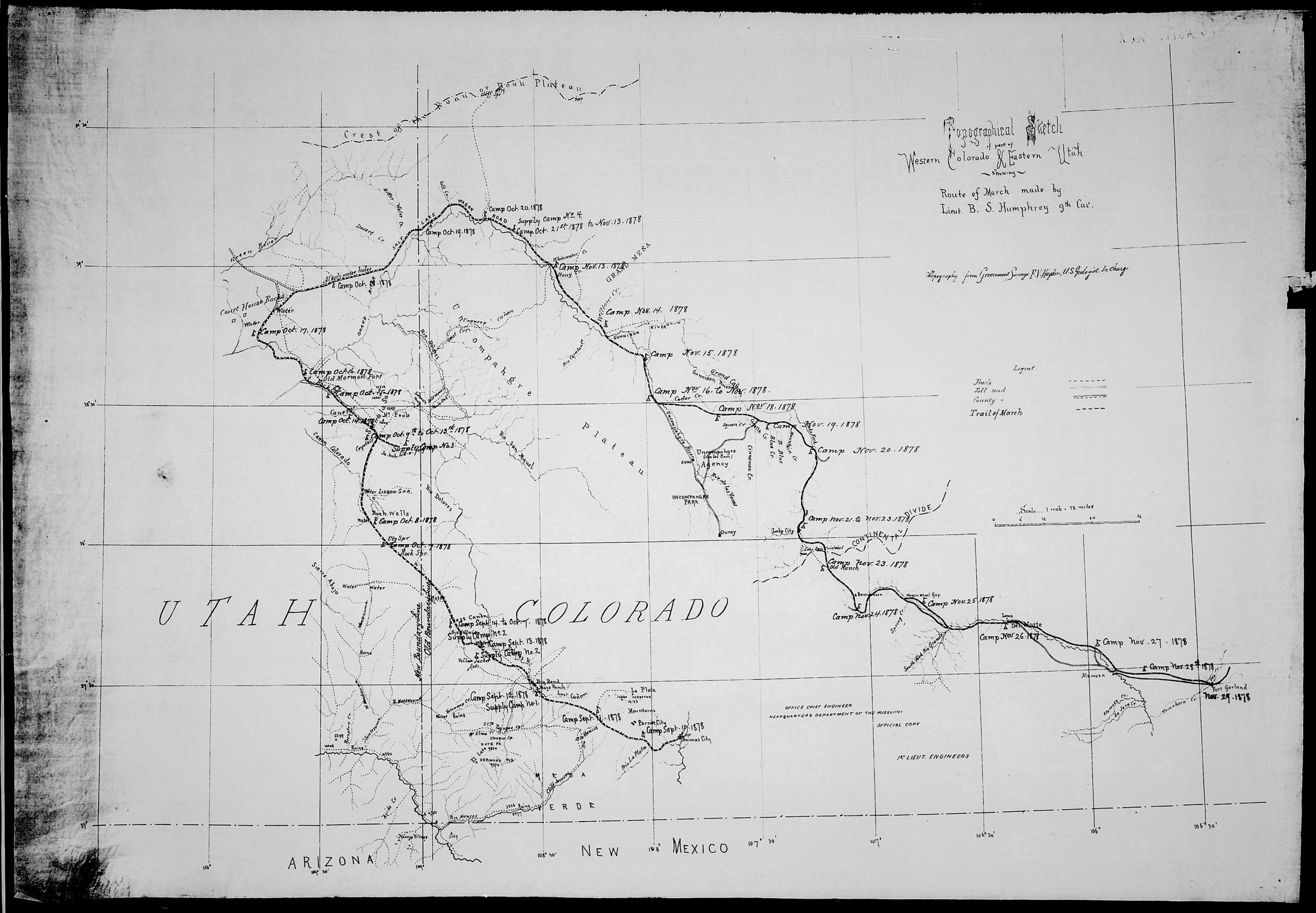Some information may be outdated.
Throughout Black History Month, the Moab Museum is digging into our collection to highlight stories of prominent Black individuals and groups in the Moab Valley. This week, we look back at the K Troop from the Ninth Cavalry at the Elk Mountain Mission (covered in the Spring 1996/97 issue of Canyon Legacy).
On July 28, 1866, Congress passed an act formalizing the addition of several additional regiments to the U.S. Army. Congress added two cavalry and four infantry regiments to promote the protection of settlers as they moved westward. For the first time in US military history, these regiments recruited Black enlisted soldiers. The Ninth and Tenth Cavalry became known as the ‘Buffalo Soldier’ regiments.
According to the National Park Service, “plains Indians [sic] who fought against these soldiers referred to the Black cavalry troops as “buffalo soldiers” … The nickname soon became synonymous with all African American regiments formed in 1866.”
As much as these soldiers have been memorialized by filmmakers, musicians, military reenactors, and musicians, “for museum curators, interpreting the Buffalo Soldiers legacy also means distinguishing facts from lore,” as stated by the National Museum of African American History and Culture.
The 1996/97 issue of Canyon Legacy, included the article “The Buffalo Soldiers Come to Spanish Valley,” written by Lloyd Pierson.
“On September 11, 1878,” the article reads, “a detachment from Company K, Ninth Cavalry under the command of 2nd Lieutenant Ballard S. Humphrey left Animas City on a 12-week patrol to Fr. Garland, CO, that took his contingent through Spanish Valley. Company K had spent the summer camped on the La Plata with others of the regiments except for one short foray in May when they were scouting for Utes in the Blue or Abajo Mountains of Eastern Utah … Lt. Humphrey’s party spent the night of October 14 at Kane Springs and the next night, October 15, at the Old Mormon Fort in Spanish Valley; present-day Moab.”
The “Old Mormon Fort” was the famed Elk Mountain Mission built by members of the Church of Jesus Christ of Latter-day Saints. LDS missionaries were directed to settle in places with water and arable land, regardless of Indigenous inhabitation. In 1855, the church sent 41 men to establish a community where the Old Spanish Trail crossed the Colorado River. When the Elk Mountain Mission arrived that June, a fort was promptly built near where a Motel 6 stands today. Conflict between the mission settlers and local Ute people soon arose and the mission was abandoned in September of 1855.
The passing of Buffalo Soldiers through eastern Utah has received little to no notice in the oral and written histories of the region. To learn more about the K Troop’s Four Corners tour, you can read the issue of the Canyon Legacy, available on the Moab Museum website. Also, listen to Kathryn Jackson, a descendant of William Moronia Behunin, a member of the Elk Mountain Mission, talk about the first attempts by the group to “settle” the Moab Valley through the Moab Museum’s Oral History Collection.
The Moab Museum is dedicated to sharing stories of the natural and human history of the Moab area. To explore more of Moab’s stories and artifacts, find out about upcoming programs, and become a Member, visit www.moabmuseum.org.
Appreciate the coverage? Help keep local news alive.
Chip in to support the Moab Sun News.





